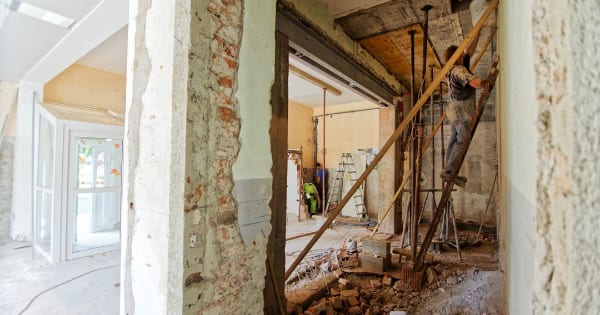
Anyone who has ever undertaken a major remodeling or construction project knows that there is always more to the project than what meets the eye. What may seem like a simple remodel is often derailed by imperfect construction timelines, unexpected structural complications, and pesky code violations. While you may not be able to anticipate every obstacle that crops up during a home improvement project, you can ensure that you’re following all local regulations and that your home stays up to code.
If you’re going the DIY route and tackling a home improvement project on your own, it’s important to be aware of the common codes you have to follow. Otherwise, you may run into financial, legal, and insurance-related trouble. Let’s take a look at three of the most common code violations so that you can stay clear of them during your home renovation.
Failing to Test for Asbestos and Lead
Laws have been in place for decades restricting the use of asbestos and lead in new buildings, but these dangerous minerals may still be in older building materials. For anyone remodeling a home on the older side, this means that testing for asbestos and lead is extremely important. It is also mandated by law in most states to protect your health as well as that of trash removal workers and landfill operators who have to interact with the materials once you dump them.
You’ll likely find asbestos in your home if it was built before 1970. It was commonly used in materials such as vinyl tile, popcorn ceiling texture, and duct insulation. If you suspect the materials you’ll be removing have asbestos in them, contact your local building authority or the regional Occupational Safety and Health Administration office to discover the safest way to test for and remove asbestos.
Lead paint has been outlawed since 1978 and certain laws prevent contractors from doing remodeling work without taking the proper precautions to contain and dispose of building materials contaminated with lead. While DIY homeowners aren’t subject to these laws, you’ll be risking the health of anyone in the building if you cut, scrape, or sand materials with lead in it. Luckily, you can purchase a cheap lead test kit to test your home for lead and then take the proper precautions if lead is present.
While you’re testing for dangerous materials in your home, it is a good time to test for radon as well. Radon is an invisible gas that can seep into your home through its foundation. While there aren’t strict laws mandating that you test for radon, the Surgeon General has warned that radon is the second leading cause of lung cancer in the United States. To prevent radon from harming your family, you can purchase a radon test kit and then look into installing radon mitigation systems if your home tests for high levels.
Disregarding Fence Height Requirements
Fences are a major source of complaints to local building and planning departments. The main issue with a fence is that the homeowner has built it too tall in an attempt to establish some privacy. This height then causes their neighbors to complain and then the neighborhood is embroiled in a fence dispute.
Most codes cap fences in the back of a property at six feet and between 42 and 48 inches in the front of the property. If you’re trying to beautify the outside of your home and your fence is not in compliance with town regulations, someone could lodge a complaint and bring a building official to your property, who will order you to tear your fence down. While you may be willing to get a lawyer for some disputes, or when you’re over 30 years old and it’s recommended that you get a will, trust, and/or health care proxy, you probably don’t want to go through the financial and emotional toll of a lawsuit just over the height of a fence. By being aware of the regulations in your area, you can make sure your fence is the right height and avoid nosy neighbors making a fuss.
Skipping Permits
One mistake many DIYers make is not getting the right permits for their project. You may think that you can skip the permit process because you’re not a professional contractor, but ducking permits can cause you major problems later on. Without permits, you won’t be in contact with your local building inspector, who knows all of the codes and can help ensure that your project complies with them.
Although getting the right permits costs you time and money, the effort is worthwhile in the long run. Whether you’re doing a kitchen remodel or putting an addition onto the back of the house, be sure that you have the right permits so that you can avoid headaches down the road.
Not only does complying with local codes keep you and your family safe, but it will also help you avoid discovering code violations when you try to sell your home. These violations can force you to reduce your asking price or cause a buyer to drop the sale altogether. Code violations can also cause issues with your homeowner’s insurance, as the company may not cover your loss if it was due to installation or construction without permits.
By taking the time to ensure that you follow the proper codes from the start, your DIY project will go much smoother and you’ll save yourself from future troubles.








